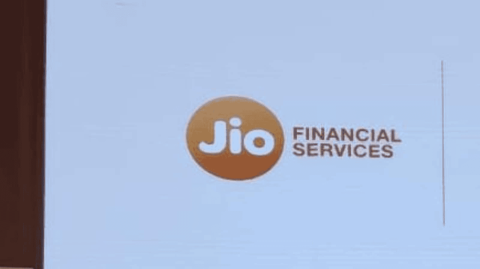Jio Financial Services (JFSL) Share Price Recovers 16% in Four Weeks but Market Analysts Remain Cautious
Jio Financial Services has recovered nearly 16 percent during the last one month. The financial services major promoted by Reliance Industries has taken support from all-time lows at Rs 198, touched during the recent market sell-off. However, market analysts are still cautious about the stock. Long term investors can consider buying in small quantities and average their acquisition price in Jio Financial Services. The stock faced continuous fall once it touched all-time high at Rs 385. Surely, many investors and traders have been trapped in the stock and there are many levels at which Jio Financial could face stiff resistance. After falling over 30% in a year, the share price has started to rebound on the back of strategic deals, quarterly results, and speculation around Nifty 50 inclusion. The road ahead remains both promising and perilous.
Stock Performance: Volatility in the Spotlight
JFSL’s current price of Rs. 258.80 represents a 0.63% decline from the prior session. But zoom out, and the picture grows complex:
52-week high: Rs. 385.85 (May 3, 2024)
52-week low: Rs. 198.65 (March 3, 2025)
6-month return: -20.66%
1-year return: -31.83%
April 2025 rebound: +12% from March lows
Short-term technicals suggest a narrow channel, with support at Rs. 225 and resistance between Rs. 260–264. While the price hovers above its 5–50-day moving averages, it remains beneath longer-term benchmarks like the 100-, 150-, and 200-day averages—signaling a cautious uptrend amid mixed sentiment.
Notably, JFSL has a beta of 1.4, making it more volatile than the broader market and a candidate for wide price swings.
Q4 FY25 Financials: Stability with Scope for Growth
For the quarter ending March 2025, JFSL posted a net profit of Rs. 316 crore, a modest 1.61% increase year-on-year. Total revenue came in at Rs. 518.36 crore for Q4 and Rs. 2,078.92 crore for FY25.
Other highlights include:
Interest income: Rs. 276 crore (slightly lower QoQ)
Net margin: Over 81%
Employee expenses: 10.52% of operating revenue
Interest expenses: Below 1%, reflecting low leverage
The strength of the company’s profit margins is offset by its low return on equity (1.23–2.13%), underscoring the need to scale and deploy capital more aggressively.
Strategic Moves: Betting Big on Digital
JFSL is positioning itself as a next-gen financial services platform through a series of strategic initiatives:
- Loan Against Securities (LAS): A digital LAS offering that promises disbursals within 10 minutes—a bold move in the competitive digital lending arena.
- BlackRock JV: An infusion of Rs. 66.5 crore into a joint venture with global asset manager BlackRock, aiming to build a high-impact wealth management ecosystem.
- Payments Bank Acquisition: Buying out SBI’s 7.9 crore shareholding in Jio Payments Bank for Rs. 104 crore, transitioning the bank into a wholly owned subsidiary of JFSL.
These steps are designed to create an integrated financial services ecosystem, blending retail lending, digital banking, and asset management under one umbrella.
Valuation: High Growth Expectations, High Risk
JFSL’s valuation metrics paint a picture of ambition:
| Metric | JFSL | Sector Average |
|---|---|---|
| Price/Earnings (P/E) | 101.96–102.29 | ~30.79 |
| Price/Book (P/B) | 1.33–1.34 | N/A |
| Net Margin | 81.24% | N/A |
| Return on Equity | 1.23–2.13% | N/A |
| Debt | Almost Nil | N/A |
While the nearly 102x P/E ratio suggests market confidence in future earnings, it also implies zero room for execution missteps. The low RoE further complicates the narrative—it’s a premium-priced company still in capital-efficient infancy.
Market Catalysts: Nifty 50 Inclusion & Liquidity Boost
According to JM Financial, JFSL’s likely inclusion in the Nifty 50 index could invite up to $404 million in passive inflows. This provides a critical short-term support base and could act as a tailwind for volumes and liquidity.
However, inclusion is speculative until formally announced, and investors are advised to temper expectations with technical caution.
Price Forecasts and Technical Outlook
Research firm Figw issued a bearish forecast for April 2025, projecting a potential downside to Rs. 205 and a cap around Rs. 224. Given the recent bounce, this creates a crucial support zone at Rs. 225. A break below this level could usher in renewed selling pressure.
Resistance remains tight, and momentum is fragile. Traders might view the Rs. 260–264 zone as an exit opportunity unless broader fundamentals shift.
Risks: The Road Ahead Is Far from Smooth
JFSL’s aspirations are massive—but so are its risks:
- Execution Risk: New digital ventures must scale quickly to justify current valuations.
- Regulatory Hurdles: NBFCs face growing compliance burdens, particularly in digital lending and payments.
- Sectoral Competition: From established giants to nimble fintechs, the battlefield is crowded.
- Valuation Fragility: At a P/E over 100, any earnings miss could cause a sharp correction.
Strengths and Structural Advantages
What sets JFSL apart?
Reliance Backing: Access to capital, trust, and a vast consumer base.
Digital Orientation: First-mover advantage in LAS and digital financial services.
BlackRock JV: Potential to disrupt the Indian asset management space.
Full Ownership of Jio Payments Bank: Enables frictionless integration across offerings.
These pillars position JFSL for scalable, technology-driven growth—assuming flawless execution.
Final Takeaway: High Stakes, High Ambition
Jio Financial Services is more than just another NBFC—it’s Reliance’s bold foray into the future of finance. But the mismatch between its present fundamentals and lofty valuation makes it a high-risk, high-reward proposition.
Analyst sentiment: “Hold” remains the consensus, with tactical buys encouraged near support levels and a target average price of Rs. 307.50—an 18.8% upside from current levels.
Bottomline for Long Term Investors
JFSL is writing the early chapters of what could become a significant story in India’s digital finance narrative. Its stock, however, is caught in a tug-of-war between valuation skepticism and strategic optimism. For investors with a long-term view and a high risk tolerance, it offers potential. For others, caution—and a close eye on execution—remains the wisest course.
